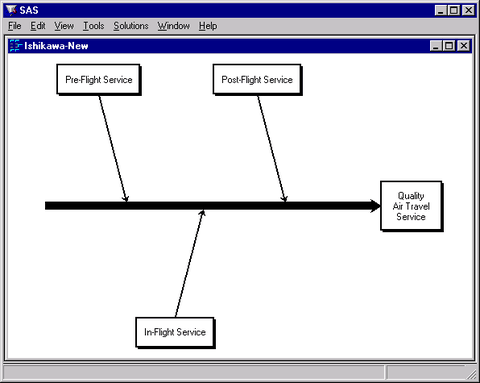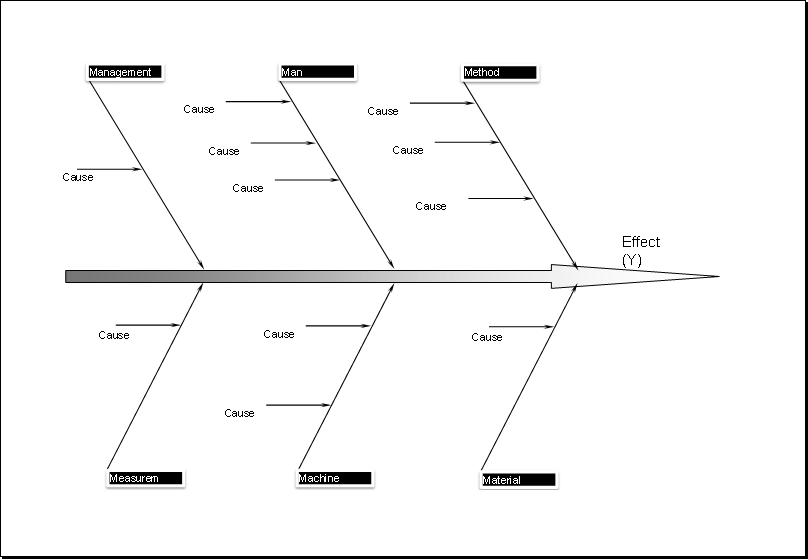

- #Ishikawa diagram template excel generator
- #Ishikawa diagram template excel download
- #Ishikawa diagram template excel free
Now click on the worksheet tab labeled "3 Legged 5 Whys" to view the results.Ĭomplete the remaining sections shaded in yellow. The Root Cause of the Detection Failure becomes the Systemic Failure problem (A10). Tired of Trying to Draw Fishbone Diagrams Manually Use the Ishikawa diagram or fishbone diagram template in Excel (a.k.a.Therefore it is also known as Ishikawa diagram or cause and effect diagram. Check sheet (Excel) Use this simple, flexible tool to collect data and analyze it. Box and whisker plot (Excel) This graphical plotting tool goes beyond the traditional histogram by providing you with easy-to-read displays of variation data from multiple sources, for more effective decision making.
#Ishikawa diagram template excel download
Ask Five Whys to find root cause of detection failures. This diagram was first created by Kaoru Ishikawa in 1960’s. Download Quality Templates and Excel Tools.


#Ishikawa diagram template excel generator
It can be used to structure a brainstorming session. Fishbone Diagram Template Diagram Generator Excel Template Automatic Fishbone Diagram Maker.
#Ishikawa diagram template excel free
Free Agile Lean Six Sigma Trainer Training The fishbone diagram identifies many possible causes for an effect or problem.These are formatted for 6M, 7 P and 5 S click on the diagram images above to see the details. The Cause and Effect Ishikawa Fishbone Diagram Excel Template provides three templates in a single Excel Workbook. Animated Lean Six Sigma Video Tutorials Three Cause and Effect/Ishikawa/Fishbone Diagrams in one Excel Template.For example, you may increase the number of potential. To represent secondary causes contributing to primary causes, drag Secondary cause shapes onto the drawing page and snap the arrowheads to primary cause lines. This template is a Microsoft Excel spreadsheet that you can use and modify to meet your specific needs. To represent major causes contributing to the categories, drag Primary cause shapes onto the drawing page and snap the arrowheads to category lines. To delete a category, select the shape and then press the DELETE key.įor each category shape on the drawing page, select the shape, and then type the name of the cause category. To add a category, drag a Category 1 or Category 2 shape onto the drawing page and position it so that the arrowhead is touching the spine. Select the spine (the horizontal arrow) on the drawing page, and then type text that describes the effect, problem, or objective.ĭetermine the number of cause categories that contribute to the effect, and then do one of the following: This template also provides a variety of shapes that represent primary and secondary causes that can be used to add even greater detail.Ĭlick File > New > Business, and then double-click Cause and Effect Diagram. The Cause and Effect Diagram template opens a drawing page that already contains a spine shape (effect) and four category boxes (causes) to help start your drawing. They are also called Ishikawa, fishbone, or characteristic diagrams. Cause and effect diagrams document all the factors that contribute to or affect a given situation: all the causes, that is, that lead to a certain effect.


 0 kommentar(er)
0 kommentar(er)
